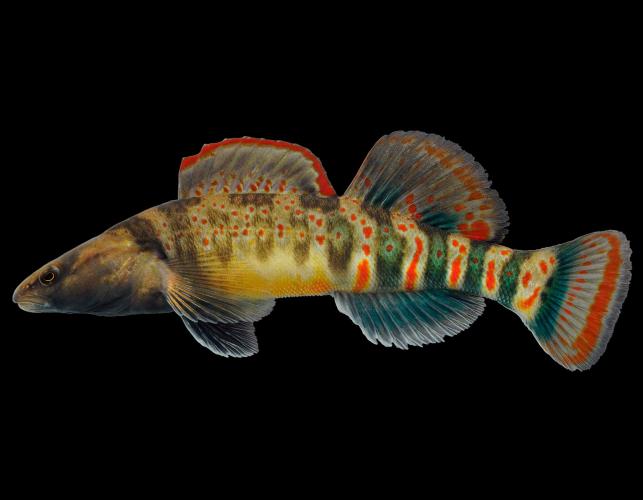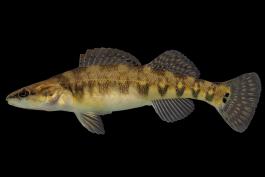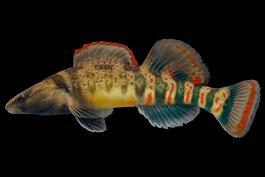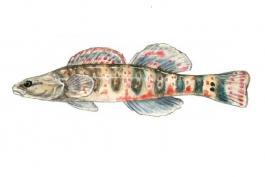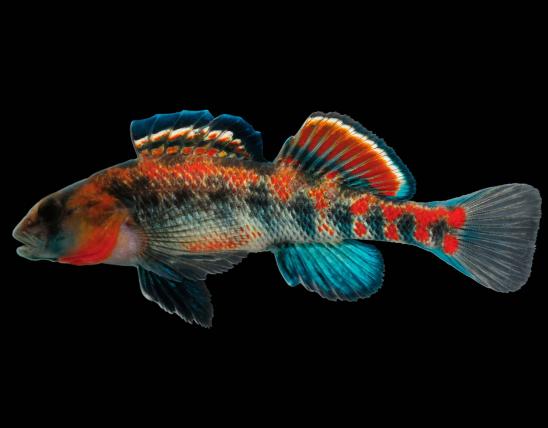
The Niangua darter is a large, slender darter. It is the only darter in Missouri with 2 small jet-black spots at the base of the tail fin. Overall color is yellowish olive with 8 dark cross-bars along the back and orange spots scattered over the upper sides. A series of U-shaped greenish blotches alternate with narrow orange bars along the midside. Breeding males are brilliantly colored, with an orange-red belly and a series of iridescent blue-green bars along their sides, and in this coloration, the tail spots are not apparent.
Adult length: about 3–4 inches.

Highly localized in a few tributaries of the Osage River. Historically the range was greater, but most habitat has been lost.
Habitat and Conservation
The largest remaining populations are probably in the Niangua and Little Niangua Rivers; elsewhere, this species is declining or has disappeared. Niangua darters live in clear Ozark creeks and small rivers draining hilly areas. Most of the year, they occupy shallow pools and runs that have a slight to moderate current and silt-free, gravelly bottoms. The decline of this species is due to habitat loss from the construction of reservoirs, disruption of stream channels, and runoff from livestock production.
Food
This fish probes for food in crevices between rocks with its long, slender snout, eating mostly nymphs of stoneflies and mayflies. Apparently they are selective eaters, as they seem to pass over other available insects such as the larvae of caddisflies, blackflies, and stoneflies.
Status
Endangered (state); Threatened (federal). A Missouri Species of Conservation Concern.
Life Cycle
In the first part of April, adults spawn at swift gravelly riffles where the fast currents keep the substrate free of silt. Males compete with each other for females and for prime spawning territories in these riffles. Darters complete about half of their total growth during their first growing season; they usually only live one or two years, though a few live as many as four.
Human Connections
It’s hard to put a value on a species threatened with extinction; though these fish are quite a bit like other darters, they are distinctly different, and losing these colorful, active little fish would be a loss to our natural heritage forever.
Ecosystem Connections
Their steady gleaning of caddisflies and black flies helps to keep those populations in check; meanwhile, these and other darters and their eggs and fry become prey for larger predators.

